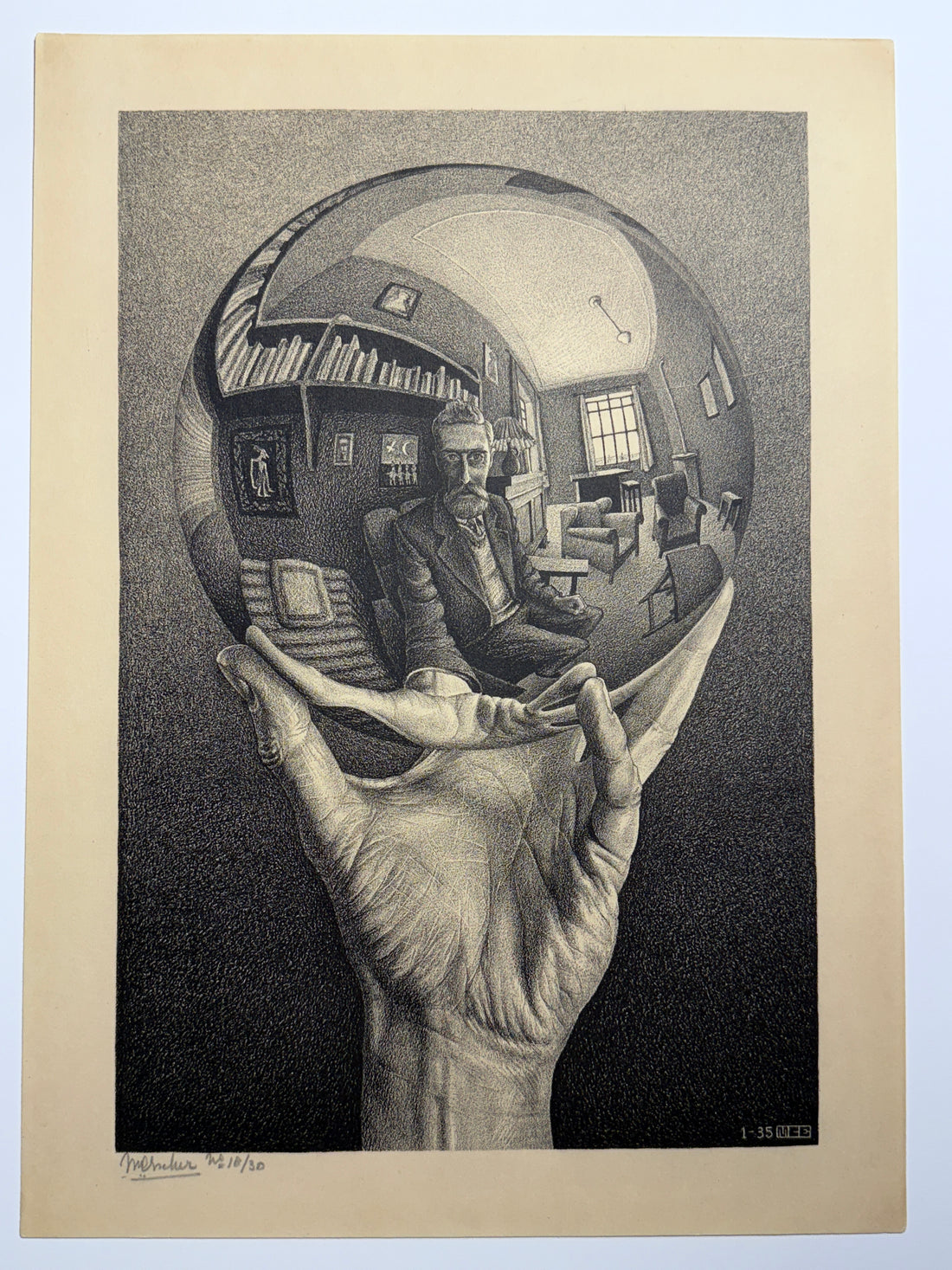MC Escher (Maurits Cornelis Escher) became famous for his mathematically inspired artworks, which combined intricate detail with imaginative perspectives, impossible structures, and optical illusions. His fame can be attributed to several key factors:
1. Unique Artistic Style
Escher’s work was highly distinctive, blending art, mathematics, and science. His fascination with geometry, symmetry, and tessellations—patterns of shapes that fit together without gaps—set him apart from traditional artists. His ability to visualize and create “impossible” structures, such as “Relativity” (1953) with its mind-bending staircases, made his work unforgettable.
2. Widespread Reproduction of His Works
Many of Escher’s works gained popularity through reproductions in books, posters, and later on, in pop culture. His intricate, surreal designs appealed to mathematicians, scientists, and the general public alike.
3. Influence from Mathematics and Science
Escher’s collaboration with mathematicians and scientists significantly boosted his reputation. Mathematicians appreciated the precision and conceptual depth of his art. In turn, they introduced his work to a broader intellectual audience, helping him gain recognition beyond traditional art circles.
• Mathematician Roger Penrose, for instance, drew inspiration from Escher’s work to develop the concept of the “Penrose stairs,” an impossible object that mirrored Escher’s own designs.
4. Exhibitions and Retrospectives
Escher held exhibitions that showcased his works and ideas to audiences around the world. Notably, his first solo exhibition at the Stedelijk Museum in Amsterdam in 1924 marked the start of public recognition. However, it wasn’t until the 1950s and 60s that his fame truly skyrocketed.
5. Posthumous Popularity
Escher’s fame continued to grow after his death in 1972. His influence expanded into modern culture, appearing in educational materials, album covers, and even architecture. He became an icon for those fascinated by the intersections of art, science, and philosophy.
6. Countercultural and Pop Culture Impact
During the 1960s and 1970s, Escher’s works became particularly popular with the counterculture movement. His explorations of alternate realities and illusions resonated with those challenging conventional views of the world.
Key Works That Boosted His Fame
• “Hand with Reflecting Sphere” (1935)
• “Ascending and Descending” (1960)
• “Drawing Hands” (1948)
• “Metamorphosis II” (1940)
• “Day and Night” (1938)
By bridging art and mathematics in a way that appealed to both intellectuals and the general public, Escher achieved a unique and lasting fame that continues to grow to this day.
